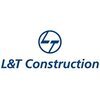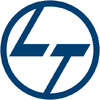Filter interviews by
J. Kumar Infraprojects Safety Supervisor Interview Questions and Answers
J. Kumar Infraprojects Safety Supervisor Interview Experiences
2 interviews found
(1 Question)
- Q1. Safety related questio basic abt experience technical
(2 Questions)
- Q1. Only for salary
- Q2. How much you are excepting
Interview Preparation Tips
I applied via Walk-in and was interviewed before Mar 2022. There were 2 interview rounds.

(2 Questions)
- Q1. Mathod statement previous work
- Q2. Hazard Identification Risk Assessment most important
- Ans.
Hazard identification and risk assessment are crucial for ensuring safety in any workplace.
Identifying potential hazards and assessing the risks associated with them is essential for preventing accidents and injuries.
This process involves analyzing the work environment, equipment, and procedures to identify potential hazards and evaluate the likelihood and severity of harm.
Examples of hazards that may be identified inc...
Interview Preparation Tips
Unwanted avoid responsibility
Top trending discussions






Interview questions from similar companies

Interview Questionnaire
1 Question
- Q1. What is the documentation work for EHS department.
- Ans.
Documentation work for EHS department includes creating and maintaining safety policies, procedures, incident reports, training records, and regulatory compliance documents.
Creating safety policies and procedures
Maintaining incident reports
Managing training records
Ensuring regulatory compliance
Updating safety manuals and guidelines
Conducting risk assessments and documenting findings
Maintaining safety data sheets (SDS)
P

I appeared for an interview before Mar 2024, where I was asked the following questions.
- Q1. What is HIRA
- Ans.
HIRA stands for Hazard Identification and Risk Assessment, a systematic process to identify and evaluate risks in the workplace.
HIRA involves identifying potential hazards in the workplace, such as chemical spills or machinery malfunctions.
It assesses the risks associated with identified hazards, determining the likelihood and severity of incidents.
Control measures are developed to mitigate identified risks, such as im...
- Q2. What is safety Audit
- Ans.
A safety audit is a systematic evaluation of an organization's safety policies and practices to ensure compliance and identify improvements.
Identifies hazards: For example, checking for proper storage of chemicals.
Evaluates safety procedures: Reviewing emergency response plans for effectiveness.
Ensures compliance: Verifying adherence to OSHA regulations.
Involves employee interviews: Gathering feedback on safety practic...

I appeared for an interview in Jul 2024.
(2 Questions)
- Q1. HSE skill and documents
- Q2. Audit

Safety Supervisor Interview Questions & Answers
KEC Internationalposted on 12 Jul 2024
I applied via Approached by Company and was interviewed before Jul 2023. There was 1 interview round.
(2 Questions)
- Q1. Jsa kya hai jsa ka full from
- Q2. Hira kya hai Hira ka full form

Safety Supervisor Interview Questions & Answers
Nagarjuna Construction Companyposted on 9 Nov 2021
I applied via Company Website and was interviewed in Oct 2021. There was 1 interview round.
Interview Questionnaire
3 Questions
- Q1. What is hira rule
- Ans.
HIRA rule is a risk assessment method used to identify and evaluate hazards in the workplace.
HIRA stands for Hazard Identification and Risk Assessment.
It is a systematic approach to identify potential hazards, assess their risks, and implement control measures to mitigate those risks.
The process involves identifying hazards, analyzing their potential consequences, evaluating the likelihood of occurrence, and determinin...
- Q2. What is pdca
- Ans.
PDCA stands for Plan-Do-Check-Act, a four-step management method used for continuous improvement.
Plan: Identify the problem and plan a solution
Do: Implement the plan
Check: Evaluate the results and compare them to the expected outcomes
Act: Take corrective actions and implement the improved process
Used in quality management, safety management, and environmental management
Example: Using PDCA to improve safety procedures i
- Q3. Pdca rule is applying starting new work control the difect
Interview Preparation Tips

- Q1. What is Emergency Response Planning (ERP)?
- Ans.
Emergency Response Planning (ERP) involves preparing for and managing emergencies to ensure safety and minimize impact.
Identifies potential emergencies, such as fires, chemical spills, or natural disasters.
Establishes clear procedures for evacuation and communication during emergencies.
Conducts regular training and drills to ensure readiness among staff.
Involves coordination with local emergency services and stakeholde...
- Q2. What is the definition of risk?
- Ans.
Risk is the potential for loss or harm arising from a hazard, often assessed in terms of likelihood and impact.
Risk involves uncertainty about outcomes, such as the chance of an accident occurring at a workplace.
It can be quantified by evaluating the probability of an event and its potential consequences, e.g., a fall from height.
Risk can be categorized into different types, such as operational risk (e.g., machinery fa...
- Q3. What are the different types of hazards?
- Ans.
Hazards are potential sources of harm or adverse effects on individuals or the environment, categorized into various types.
Physical Hazards: Examples include machinery, heights, and slippery surfaces.
Chemical Hazards: Involves exposure to harmful substances like acids, solvents, or pesticides.
Biological Hazards: Includes bacteria, viruses, and other pathogens that can cause illness.
Ergonomic Hazards: Related to repetit...
- Q4. What are the most common hazards in your workplace?
- Ans.
Common workplace hazards include slips, trips, falls, chemical exposure, and ergonomic issues that can affect employee safety.
Slips, trips, and falls: Wet floors or uneven surfaces can lead to serious injuries.
Chemical exposure: Improper handling of hazardous materials can cause health issues.
Ergonomic hazards: Poor workstation design can lead to musculoskeletal disorders.
Electrical hazards: Faulty wiring or equipment ...
- Q5. How do you report a safety incident or near-miss?
- Ans.
Reporting a safety incident involves documenting details, notifying supervisors, and following protocols to prevent future occurrences.
Immediately assess the situation for safety and provide first aid if necessary.
Document the incident details, including time, location, and individuals involved.
Notify your supervisor or safety officer as soon as possible.
Complete an incident report form, detailing the nature of the inc...

Safety Supervisor Interview Questions & Answers
Nagarjuna Construction Companyposted on 11 Nov 2022
I applied via Company Website and was interviewed in Oct 2022. There were 2 interview rounds.

(2 Questions)
- Q1. About Health safety in construction and environment
- Q2. Ask any question about safety
Interview Preparation Tips

I applied via Job Fair and was interviewed before Sep 2023. There was 1 interview round.
(5 Questions)
- Q1. Before company experience. And lifting procedure
- Ans.
Before gaining company experience, it is important to have a clear understanding of proper lifting procedures to prevent injuries.
Before starting any lifting task, assess the object's weight and size to determine the best approach.
Use proper lifting techniques such as bending at the knees, keeping the back straight, and using the legs to lift.
Avoid twisting while lifting and always ask for help if the object is too hea...
- Q2. Why is important of safety
- Ans.
Safety is important to prevent accidents, injuries, and illnesses in the workplace.
Ensures the well-being of employees
Reduces the risk of accidents and injuries
Increases productivity and efficiency
Compliance with regulations and standards
Enhances company reputation and employee morale
- Q3. What is hazard and typ of hazard
- Ans.
A hazard is a potential source of harm or adverse health effect on a person or persons. Types of hazards include physical, chemical, biological, ergonomic, and psychosocial.
Hazard is a potential source of harm or adverse health effect
Types of hazards include physical, chemical, biological, ergonomic, and psychosocial
Physical hazards can include noise, vibration, radiation, and temperature extremes
Chemical hazards can i...
- Q4. What is your responsibility.
- Ans.
As a Safety Supervisor, my responsibility is to ensure a safe work environment by implementing and enforcing safety policies and procedures.
Implement and enforce safety policies and procedures
Conduct regular safety inspections and audits
Provide safety training to employees
Investigate accidents and incidents to determine root causes
Maintain safety records and documentation
- Q5. Why is join my company
Interview Preparation Tips
J. Kumar Infraprojects Interview FAQs
Tell us how to improve this page.
J. Kumar Infraprojects Interviews By Designations
- J. Kumar Infraprojects Civil Engineer Interview Questions
- J. Kumar Infraprojects Civil Foreman Interview Questions
- J. Kumar Infraprojects Senior Engineer Interview Questions
- J. Kumar Infraprojects Safety Officer Interview Questions
- J. Kumar Infraprojects Safety Supervisor Interview Questions
- J. Kumar Infraprojects Asst Store Interview Questions
- J. Kumar Infraprojects Quality Engineer Interview Questions
- J. Kumar Infraprojects QA QC Engineer Interview Questions
- Show more
Interview Questions for Popular Designations
- Safety Officer Interview Questions
- Assistant Safety Officer Interview Questions
- Safety Executive Interview Questions
- Assistant Manager Safety Interview Questions
- Safety Steward Interview Questions
- Junior Safety Officer Interview Questions
- Safety Engineer Interview Questions
- Safety Manager Interview Questions
- Show more
J. Kumar Infraprojects Safety Supervisor Interview Process
based on 2 interviews
Interview experience
Safety Supervisor Interview Questions from Similar Companies
J. Kumar Infraprojects Safety Supervisor Reviews and Ratings
based on 11 reviews
Rating in categories
|
Junior Engineer
177
salaries
| ₹2 L/yr - ₹4.8 L/yr |
|
Civil Engineer
168
salaries
| ₹2.2 L/yr - ₹9 L/yr |
|
Senior Engineer
166
salaries
| ₹4.4 L/yr - ₹11.7 L/yr |
|
Civil Site Engineer
149
salaries
| ₹2 L/yr - ₹6.4 L/yr |
|
Engineer
112
salaries
| ₹2.5 L/yr - ₹9 L/yr |

Larsen & Toubro Limited

Tata Projects

L&T Construction

Kalpataru Projects International
- Home >
- Interviews >
- J. Kumar Infraprojects Interview Questions >
- J. Kumar Infraprojects Safety Supervisor Interview Questions












